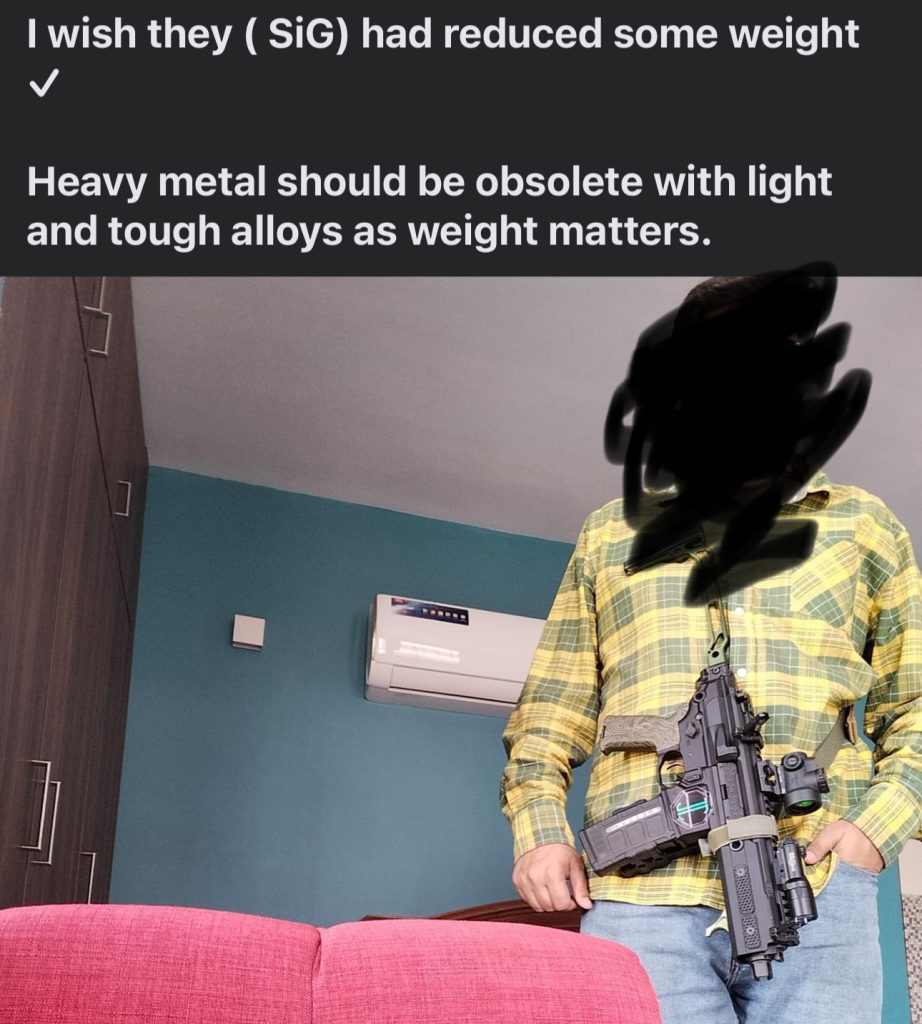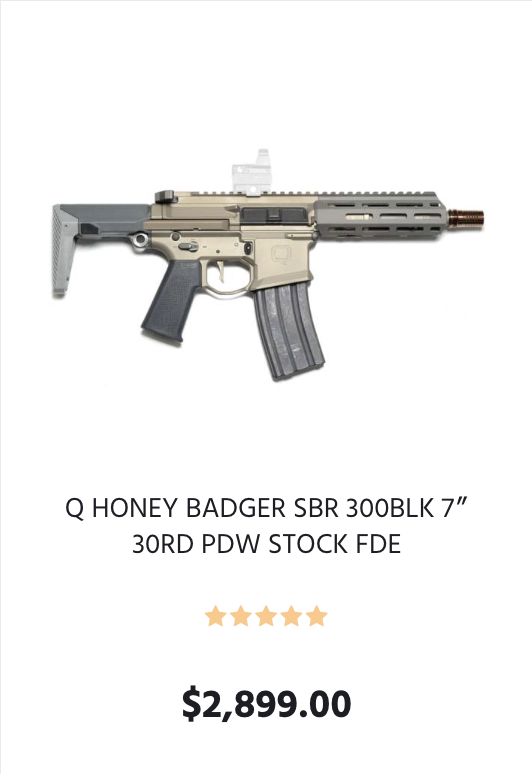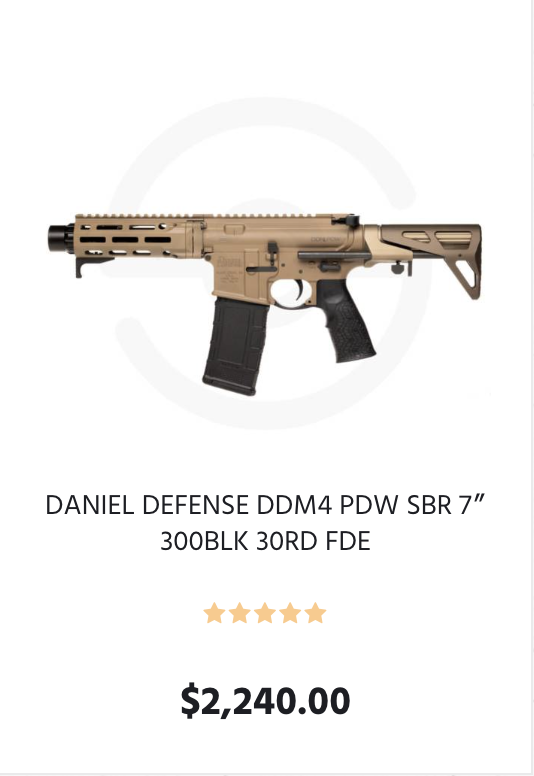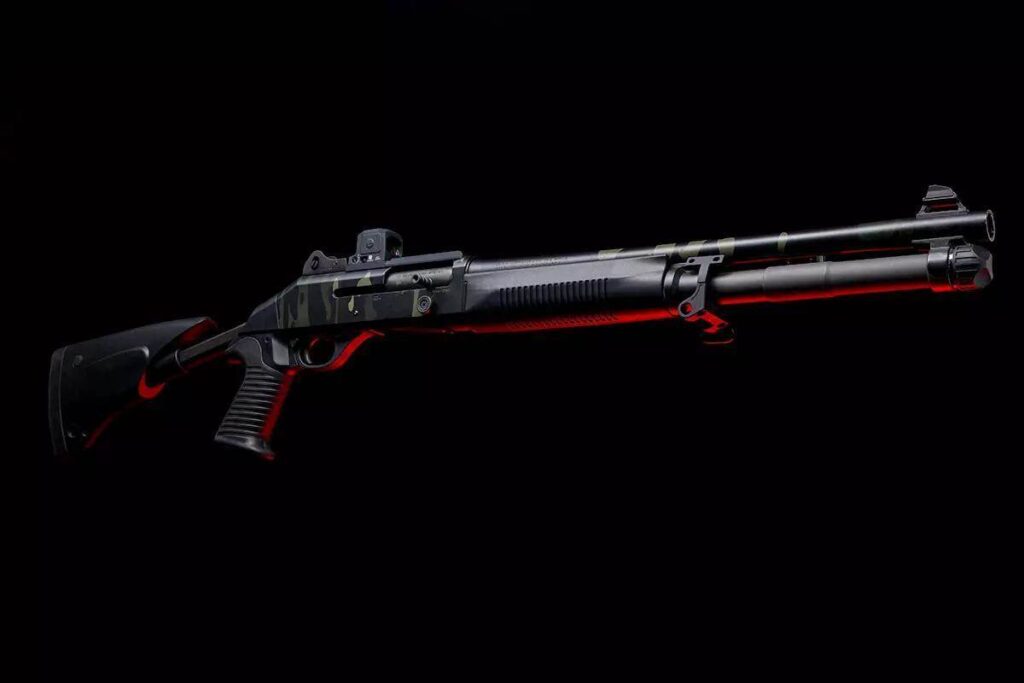Yes… yes, I know. Pounds equal pain. I get it. I am an 0311, I’ve been on those long walks with stuff on my back with an M249.
What is supposed to be an admonishment to pack your kit smart, so you don’t bring unnecessary items, you distribute the weight evenly, you layer items properly so you can access them, and you can don and doff the items without much issue has devolved (as internet arguments do) into how much a rifle should weigh and how much is “too much”

Advertisement — Continue Reading Below
I’m not sure what the target weight of the original poster was, or if this is merely a really good troll post, but I would ask the OP what they think the MCX Rattler is made from? It is aluminum, a light a tough alloy. The barrel, of course, bolt carrier, and operating mechanism are steel as they are the pressure bearing parts. Those parts need to be able to handle the heat and pressure of the firing cycle. The MCX LT line shaved a little weight but… c’mon folks, let me be real with you.
Expect 10 pounds.
Just expect it. And stop worrying about it. It is just 10lbs.
Advertisement — Continue Reading Below
The M16A4 is 9lbs (8.81) loaded and otherwise slick. Now add an optic and add a PEQ15… oh, look 11lbs. The M4 shaves a little weight but can easily add it back with good accessories. So stop trying to cut ounces and start building the carbine you want in the the way you want it to work. It is going to be 8 to 11lbs, always is.
Did you manage to build one that is 7.6lbs with a red dot, an expensive lightweight mount, skeletonized everything, lightweight expensive internals that cost half again or more, and a light that you couldn’t save any weight with because it is a light and needs all its components? Cool. Nicely done.

Advertisement — Continue Reading Below

The question is did you compromise gain any function, especially in a firearm you are very likely not carrying all that often?
The next question is did you lose or compromise reliability or function, did you give up something necessary or useful to save weight and is that function more useful than the weight savings?
Advertisement — Continue Reading Below
Those aren’t rhetorical questions, they have answers based on your use philosophy and the role the carbine is there to fill. Weight is going to matter most within the context of everything carried and the time it is carried. It is also going to matter how it is carried. A pound saved is almost immaterial if the gun lives in/on a vehicle like a patrol carbine. It saves more if it is hiking with you in the mountains and you have a hard weight cap. But remember you are building for a capability, weight is a single factor.
Hefting capability
The two biggest weight adds, and fatigue points, you might be adding to a carbine are an optic and a suppressor. These also mount in ways that make them leverage on your body above their mass alone. They have a greater fatiguing influence as they are used because of where the weight gets added, especially with suppressors.
That balances against the increased capability the accessories provide the shooter and the amount of time the carbine is expected to be carried and used. Remember, shooting a 2-Day carbine course is not a realistic assessment of use.
Advertisement — Continue Reading Below
Physics
As a final series of thoughts, remember the things that greater mass provides you. Weight absorbs recoil, heavier rifles transfer less recoil to the shooter. This could end up being telling, at least a marginal amount, in how fast you can run the gun and how comfortable it is to run. Heavier might equate to more fatigue, but less felt recoil. Balance. There is no free lunch.
So don’t sweat the small stuff, and ounces you aren’t hefting all that often are small in most realistic circumstances. Your home defense gun being 10lbs instead of 9lbs doesn’t matter if the 10lb gun does what you need and does it well. Your travel carbine bagged up or your patrol carbine in the cruiser being 8lbs or 8.5lbs isn’t going to matter, it is going to matter that you can grab it and it can do what you need on demand.
Now that said let’s not double the weight of a gun. A 15lb behemoth of an AR is going to degrade your capabilities in a way a 5lb one won’t especially outside certain roles. 15lbs on a precision rifle might be fine, but if you are carrying it and it isn’t making your job better/easier then it is likely too much.
Advertisement — Continue Reading Below
Your sweet spot is likely in the 7-11lb range all set up. With 7lbs, maybe less, being a dot, a small light, and no suppressor on an SBR and 11lbs being a rifle with LPVO, suppressor, LAM, and probably an offset dot. Neither end of this range is unreasonable.















